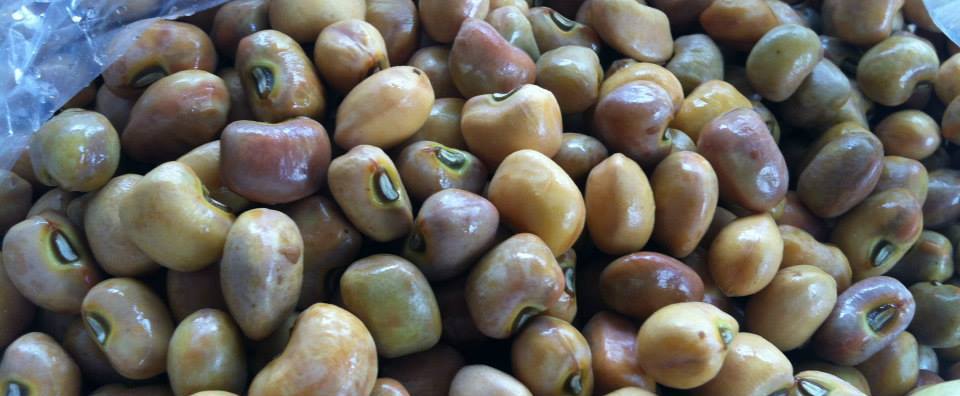This week’s box left me in a quandary (which is not why I’m late). Talk about tomatoes? Corn? Melons? Blueberries? Okra? Pinkeye peas? And just what is the difference between pinkeye peas and all those similar varieties like blackeye peas and lady peas and crowder peas … all variously known as southern peas, field peas or cowpeas?
Ok – I’ll start with southern peas. All these peas are a gift to us from Africa, and are still widely grown there. Because they love a long, hot growing season, they’re perfect for our climate. If you live in Wisconsin, you’re not growing these peas. The Southern Seed Legacy offers dozens and dozens of southern peas.
The “eye” is the hilum, the point where the pea is attached to the pod. Not all southern peas have eyes. Lady peas are considered by many to be the most delicate, and they have no apparent eye. Pinkeye peas grow inside purple hulls, sometimes marbled, and have a slight sweetness. They go well with salty, porky and herbal backdrops – so cook them “southern-style” or cook them “Italian-style”, and you can’t go wrong.
Blackeye peas are slightly larger, and have a more floury texture than a pinkeye pea when they’re cooked. Traditionally they get that smoky-porky treatment, but they’re also delicious with coconut milk, ginger and other Asian flavorings.
I don’t know that we’ll be getting other southern pea types, but whenever a southern pea appears in the box, thank the Swancys for doing the shelling for us. Shelling these things is tough. When asked how long it would take to shell enough southern peas to make a meal, Chef Louis Osteen, formerly of Charleston and Pawley’s Island, is quoted as saying, “You set on the front porch and shell until the sun goes down.” How lucky we are that all we have to do is rinse and cook.

